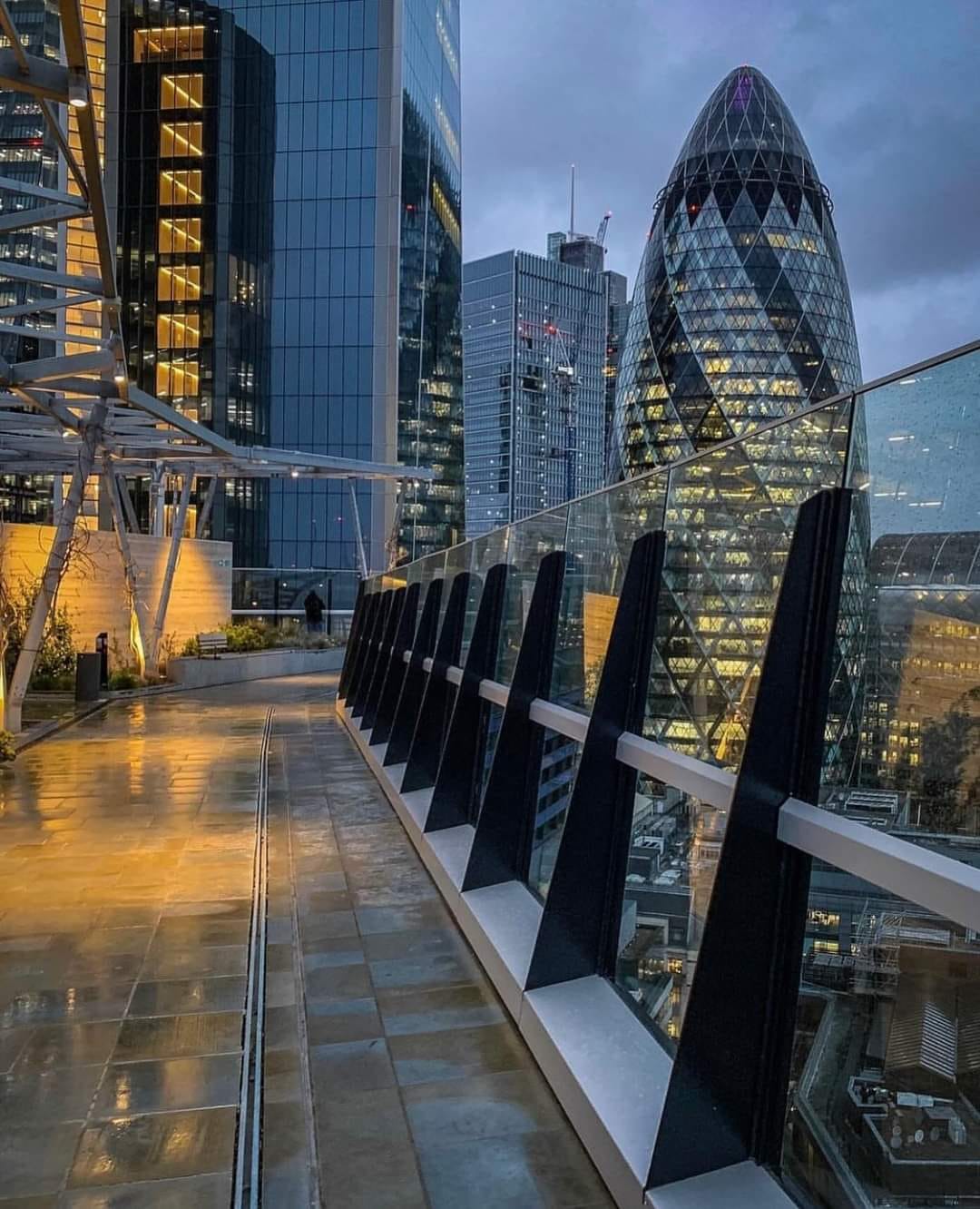Events
| Name | organizer | Where |
|---|---|---|
| MBCC “Doing Business with Mongolia seminar and Christmas Receptiom” Dec 10. 2024 London UK | MBCCI | London UK Goodman LLC |
NEWS
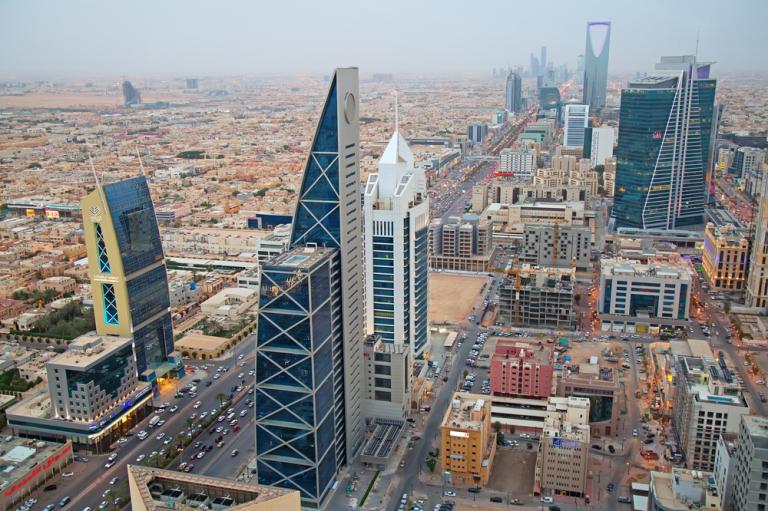
Prime Minister of Mongolia makes historic visit to middle east www.uk.advfn.com
The Prime Minister of Mongolia, L. Oyun-Erdene, has completed a week-long visit to the Middle East during which he discussed how to increase bilateral co-operation and promote economic development with the leaders of Saudi Arabia, the Kingdom of Bahrain and the United Arab Emirates.
Prime Minister of Mongolia L. Oyun-Erdene meets with Crown Prince and Prime Minister of the Kingdom of Bahrain Salman bin Hamad bin Isa Al Khalifa
During his visit, the Prime Minister met with:
Crown Prince and Prime Minister of the Kingdom of Saudi Arabia Mohammed bin Salman Al Saud, with whom he discussed expanding bilateral co-operation in the areas of renewable energy, minerals and environmental protection
Crown Prince and Prime Minister of the Kingdom of Bahrain Salman bin Hamad bin Isa Al Khalifa, with the two leaders discussing plans to work together to promote economic development and combat desertification
President of the United Arab Emirates Sheikh Mohamed bin Zayed Al Nahyan, who agreed with Prime Minister Oyun-Erdene on the importance of strengthening ties in areas ranging from the digital economy to tourism
The historic nature of the visit – which included the first ever official visit by a Prime Minister of Mongolia to Bahrain – and the seniority of those meeting with the Prime Minister, underscore Mongolia's increasing attractiveness to international partners as a destination for foreign direct investment. This follows Mongolia's economy growing by 7% in 2023.
During his time in the region, the Prime Minister also gave a keynote speech to the 16th Session of the Conference of the Parties to the UN Convention to Combat Desertification (UNCCD COP 16), taking place in Riyadh, during which he outlined the impact of desertification on Mongolia and the need for international collaboration to tackle this issue. Mongolia will host the UNCCD COP 17 summit in 2026.
The Prime Minister also attended the One Water Summit taking place in Riyadh, where in a meeting with President Macron of France both leaders expressed their interest in expanding co-operation in the mining sector in an environmentally-sustainable way, and commencing work on major joint projects in the near future.
Commenting on his visit, the Prime Minister of Mongolia, L. Oyun-Erdene, said:
"Strengthening Mongolia's economic and diplomatic links with key Third Neighbours in the Middle East is vital to secure the investment that will deliver a better standard of living for our people and tackle the environmental challenges that threaten our nomadic heritage.
"In working more closely with Saudi Arabia, Bahrain and the United Arab Emirates, we can unlock new opportunities in mining, renewable energy, tourism, agriculture and other sectors, partnering to deliver major projects to the benefit of our citizens.
"The success of my visit shows that countries in fast-growing parts of the world are increasingly looking on Mongolia as a partner for growth and economic development, and I look forward to our ties in the region going from strength-to-strength in the years ahead."

Rattled by China, West scrambles to rejig critical minerals supply chains www.reuters.com
China’s trade restrictions on strategic minerals are starting to hit Western companies where it hurts.
Blaming Beijing’s curbs on antimony exports announced in August, German chemicals and consumer goods heavyweight Henkel told customers last month it had declared force majeure and suspended deliveries of four types of adhesives and lubricants widely used by automakers, according to a Nov. 8 letter to clients reviewed by Reuters.
Sign Up for the Battery Metals Digest
Henkel uses the silvery metal to make its Bonderite and Teroson-branded products, core parts of the company’s adhesive technologies division, which brought in 10.79 billion euros ($11.4 billion) in revenue last year.
“We have been notified by our suppliers that the importation of these raw materials has been delayed pending the Chinese government accepting license applications,” according to the letter, which was signed by two senior executives.
“As a result, Henkel is hereby declaring force majeure in connection with its deliveries of these products,” the German company also said, adding it was unable to predict the duration of the situation.
The letter from Henkel, which had not been reported previously, and conversations with more than two dozen traders, miners, processors, end-users, and industry experts in North America, Europe and China underscore the severe disruption caused by Beijing’s trade restrictions and highlight how Western players’ struggle to replace China-based supply chains.
Contacted by Reuters about the letter, Henkel said it was working to support its customers and find alternative supplies: “We are monitoring the global supply situation of antimony very closely and aim to restore solutions to fulfill our customers’ orders.”
The price of antimony, scarce in nature but essential for military equipment such as ammunition, infrared missiles, nuclear weapons, and night vision goggles, rallied nearly 230% this year to about $39,000 per metric ton in Rotterdam’s busy spot market, according to market intelligence provider Argus.
China is the world’s largest antimony producer and dominates the production of many strategic materials.
Last year, Beijing also limited exports of gallium and germanium – used for semiconductors, solar panels and weapons – as well as certain types of graphite – a key component in EV batteries.
Responding to a fresh US crackdown on China’s chip industry, Beijing this week further ratcheted up pressure, imposing an outright ban on exports of gallium, germanium and antimony to the United States, where Henkel makes Bonderite in Michigan.
Looking for alternatives
Beijing’s restrictions bring added urgency for Western players to cut their reliance on minerals from China.
Miner Perpetua Resources, for instance, is developing an antimony mine in Idaho with US government funding.
But new mines can take years to develop, leaving players like Henkel scrambling to find alternatives, which are often more costly.
“Please note that we are in close contact with our suppliers and using all commercially reasonable means to leverage our global supply chain to address this situation and support our customers,” Henkel also wrote in the letter.
Meanwhile, some Western miners and processors have started to build up capacity.
United States Antimony (USAC), the only North American processor of the metal, made plans to lift output at its Montana smelter, which was running at 50% of capacity after China announced curbs on antimony exports in August.
“Our decision to ramp up production was predominantly triggered by the more than tripling of worldwide Rotterdam antimony prices,” the company’s chairman, Gary Evans, told Reuters.
China’s restrictions “created significantly more demand for our finished products,” he added.
Mining at the Montana site was halted in 1983, when it was cheaper to source antimony from mines outside the United States, and environmental curbs now prevent extraction there, according to the company.
USAC, which does not rely on China, is in talks to receive the material from four other countries and one domestic supplier as early as December, Evans said, declining to name them for competitive reasons.
Orders at Ottawa-based Northern Graphite, which touts itself as North America’s only producer of natural flake graphite, jumped 50% in the aftermath of China’s graphite curbs announced in October 2023, CEO Hugues Jacquemin told Reuters.
“When the export controls came into effect in December last year, there was quite a surge in demand. We started ramping up capacity,” said Jacquemin, whose firm is developing projects in Namibia and Ontario to add to its mine in Lac des Iles, Quebec.
China accounts for over 70% of supply of both natural mined graphite and its synthetic variety.
Mark Jensen, CEO of ReElement Technologies, an arm of American Resources that specializes in recycling and refining rare earths, said China’s most recent export ban means the company has this week fielded at least 10 calls from US miners offering zinc ore, which can be a source of germanium during processing.
Those shipments had previously gone to China for processing given lower labour cost and different environmental standards, he said.
“We have been reaching out to US suppliers of these feedstock to sell these byproducts to us instead of sending it to China as we are now an alternative to China,” Jensen told Reuters.
Canadian miner Teck Resources, which produces germanium as a byproduct at its Red Dog zinc mine in Alaska and is the only supplier of the metal in North America, told Reuters it was studying whether to boost output of the critical material there now that China has blocked exports to the United States.
Disrupted markets
China’s export squeeze has triggered a surge in prices for many strategic minerals.
Gallium sold outside of China was 30% to 40% more expensive than in the People’s Republic in the first half of 2024 from a year before, according to Toronto-based Neo Performance Materials, which produces gallium by recycling manufacturing scrap, said in August.
In China, the restrictions have forced some weaker players out of the market, traders and analysts told Reuters.
Two Chinese germanium traders told Reuters they had given up on exports as they were unable to secure licenses either because overseas clients were unwilling to provide specific details on end-users or because they are from the United States.
Even before Beijing’s latest curbs singling out the United States, no Chinese germanium or gallium was shipped there this year through October, Chinese customs data show. Over the same period in 2023, the US ranked as the fourth- and fifth-largest export market for the minerals.
For end-users, China’s restrictions underscore the importance of supply diversification.
“When you de-risk, you need to de-risk with different levers,” said Maxime Picat, chief purchasing officer at automaker Stellantis. “If you are a one-solution company, knowing that your battery suppliers are all Chinese or all Korean, then you are at risk.”
($1 = 0.9465 euros)
(By Amy Lv, Divya Rajagopal, Ernest Scheyder, Alessandro Parodi, Giulio Piovaccari and Sabine Siebold; Editing by Tony Munroe, Veronica Brown and Lisa Jucca)

Flu, flu-like illnesses surge in Mongolia's capital amid severe air pollution www.xinhuanet.com
The prevalence of flu and flu-like illnesses is surging in Ulan Bator, the capital of Mongolia, amid severe air pollution, according to the country's National Center for Communicable Diseases (NCCD) on Monday.
Nationwide, 277,000 people sought outpatient care in the past week, with 7.7 percent showing symptoms of influenza or influenza-like illness, the NCCD said in a statement.
The NCCD urged the public to take strict infection prevention measures, including wearing masks, to combat the high prevalence of flu and flu-like illnesses amid the worsening air pollution.
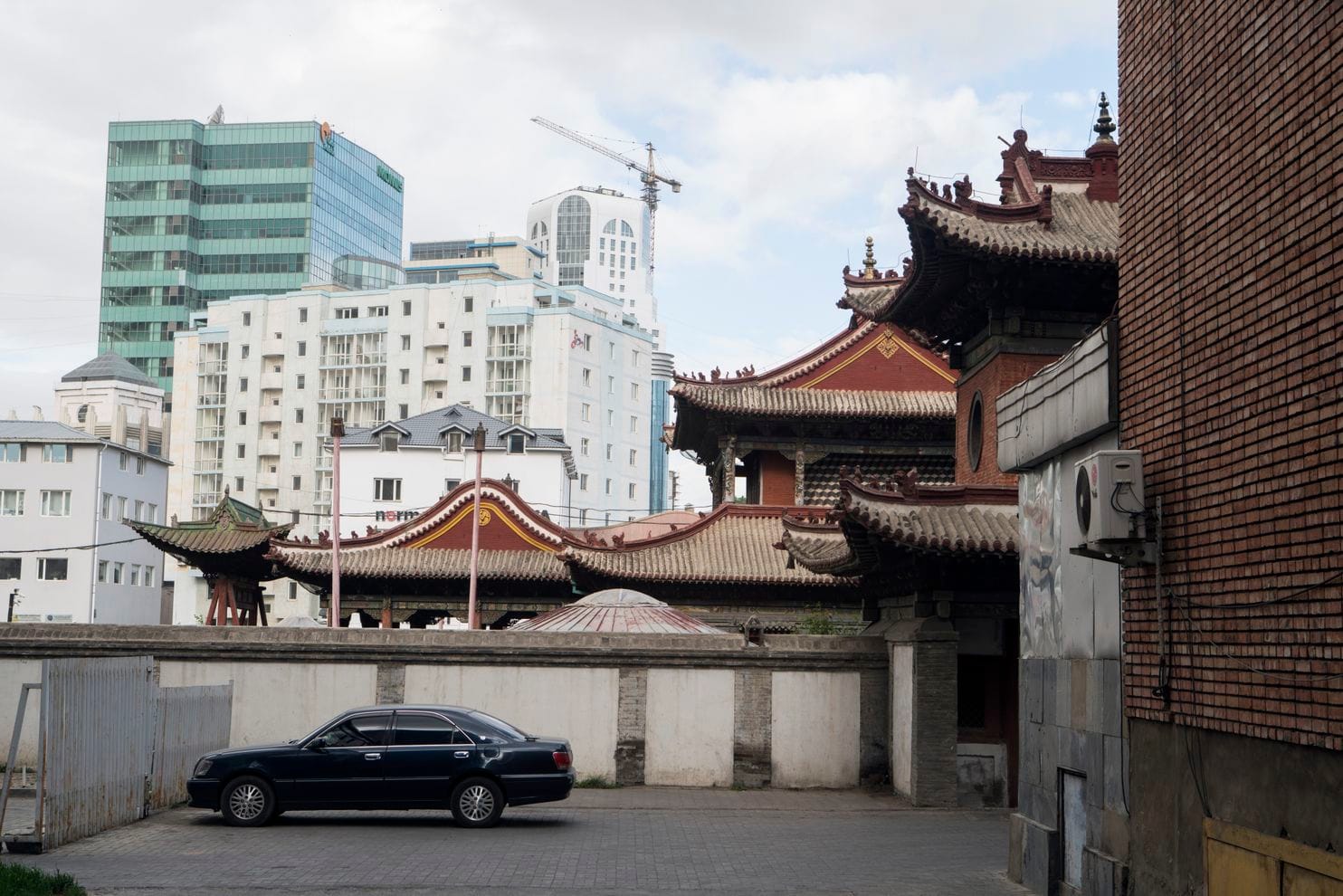
Support for OSCE principles reaffirmed at 31st Ministerial Council in Malta www.ubpost.mn
The 31st Meeting of the OSCE Ministerial Council took place in Ta Kali, Malta, on December 5-6, with a delegation from Mongolia led by L.Munkhtushig, State Secretary of the Ministry of Foreign Affairs. The two-day session saw participation from foreign ministers and senior officials from the OSCE’s 57 member states and 11 partners for cooperation. Key topics discussed included the ongoing conflict in Ukraine, regional security, human rights, and pressing economic and environmental challenges. Internal matters such as the organization’s budget and senior official appointments were also addressed.
During the discussions, State Secretary L.Munkhtushig reaffirmed Mongolia's unwavering support for the OSCE’s fundamental principles and initiatives. He emphasized the country’s commitment to collaborative efforts in areas such as democracy promotion, human rights protection, good governance, and combating corruption. Mongolia has been a partner since 2004 and became a full member in 2012, reinforcing its role within the organization.
The council concluded with significant institutional decisions aimed at bolstering the OSCE's capacity to respond effectively to complex security issues. Notably, consensus was reached on appointing a new OSCE Secretary General and Heads of Institutions, strengthening leadership to steer the organization during uncertain times. Malta's Chair-in-Office, Deputy Prime Minister and Minister for Foreign Affairs and Tourism Ian Borg, highlighted the importance of these developments, stating: “Consensus is not a relic of the past but an achievable reality when collective interests take precedence over individual differences.”
Borg stressed that these outcomes were not mere formalities but vital for the OSCE’s function and effectiveness. “These decisions reaffirm our ability to address today’s security challenges,” he added, underscoring the OSCE’s enduring role in promoting peace, democracy, and human rights, and supporting conflict prevention and comprehensive security. Reflecting on the year’s theme, ‘Strengthening Resilience, Enhancing Security’, Borg noted that Malta had laid a strong foundation for the organization to meet future demands and be better prepared for challenges ahead.
The council’s closing also marked the transition of the OSCE Chairmanship to Finland for 2025, coinciding with the 50th anniversary of the Helsinki Final Act. Incoming Chairperson-in-Office, Finnish Foreign Minister Elina Valtonen highlighted that Finland’s leadership would focus on resilience, particularly amid Russia’s war of aggression in Ukraine. “We aim to enhance the OSCE’s operational capacity and empower people in neighboring areas to live in democratic states governed by the rule of law,” Valtonen said, reaffirming the importance of OSCE principles.
In his closing remarks, Borg called on member states to renew their commitment to the organization’s foundational principles. “Let us leave behind a legacy of peace, security, and prosperity for future generations. An investment in the OSCE is an investment in the spirit of possibility,” he concluded.
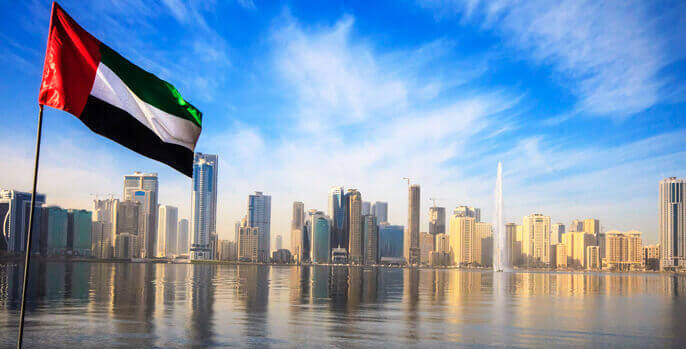
Mongolian Prime Minister visits Sheikh Zayed Grand Mosque www.wam.ae
Oyun-Erdene Luvsannamsrai, Prime Minister of Mongolia, visited the Sheikh Zayed Grand Mosque, accompanied by Odonbaatar Shijeekhuu, Ambassador of Mongolia to the UAE, and his accompanying delegation.
Prime Minister Luvsannamsrai and the accompanying delegation toured the mosque's halls and outer corridors, learning about the mosque's cultural message of coexistence, tolerance, and openness to others, inspired by the values of the founding father.
Accompanied by Dr. Yousif Al Obaidli, Director-General of the Sheikh Zayed Grand Mosque Centre, they also learned about the significant role played by the Sheikh Zayed Grand Mosque Centre in promoting the true essence of Islamic culture, building bridges of understanding with various cultures around the world, and what distinguishes it from other places of worship.
He and his accompanying delegation were briefed on the history of the grand edifice, the mosque's aesthetics, and the exquisite Islamic architectural arts that are evident in every corner.
They also viewed the unique artifacts and the finest examples of Islamic civilization's artistic and architectural designs throughout the ages, which come together in the mosque's design to reflect the beauty of cultural harmony and unity in a single creative work.
At the end of the visit, the guest was presented with a copy of the book "Sheikh Zayed Grand Mosque: Flow of Peace," the latest publication by the Sheikh Zayed Grand Mosque Centre. The book takes readers on a photographic journey to explore the architectural beauty of the mosque through a collection of award-winning photos from the "Spaces of Light" competition, highlighting the mosque's unique architectural art.
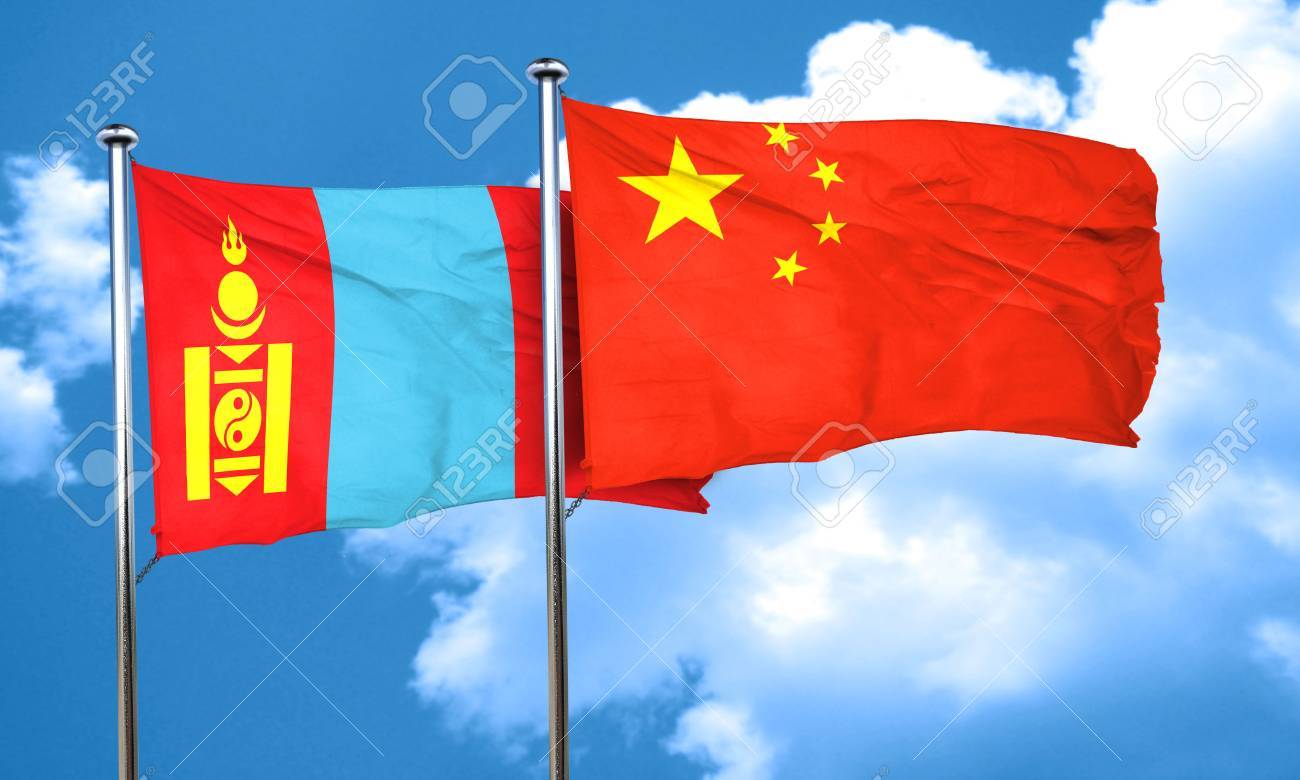
Interview: Mongolia-China eco-cooperation fruitful, says minister www.xinhuanet.com
Mongolia-China cooperation in combating desertification, conserving biodiversity, and mitigating climate change is fruitful and flourishing, Mongolia's Minister of Environment and Climate Change Saldan Odontuya has said.
Joint environmental initiatives are a key area of bilateral eco-cooperation, said the minister in an interview with Xinhua, adding that they are in line with the shared goals outlined in the 2022 joint statement on advancing the comprehensive strategic partnership in the new era between Mongolia and China.
To further strengthen cooperation in desertification prevention, the two countries have jointly established the China-Mongolia Desertification Prevention and Control Cooperation Center. A research team from Peking University is preparing a comprehensive technical and economic feasibility study, and a joint working group is conducting research on the project, the minister added.
As part of this collaboration, China has supported Mongolia's "Plant a Billion Trees" plan, which aims to plant at least 1 billion trees by 2030 to combat desertification.
China International Development Cooperation Agency has reached an agreement with Mongolia's Ministry of Economy and Development and other relevant agencies to advance desertification prevention. Additionally, Mongolian officials and environmental experts have traveled to China to learn from the country's desertification control experience.
Odontuya highlighted the success of a joint project between Mongolia and China from 2018 to 2024, which aimed at protecting the critically endangered Gobi bear (Mazaalai) through technical assistance to improve research conditions and facilitate collaboration between Mongolian and Chinese scientists.
The Gobi Desert is home to rare and endangered species, such as the Gobi bear, Przewalski's horses (Takhi), argali wild sheep, snow leopards, and migratory birds. This area is the only habitat of the critically endangered wild Bactrian camel (Khavtgai).
Looking ahead, Mongolia seeks to expand cross-border conservation efforts, with an emphasis on wildlife migration routes protection, zoonotic diseases prevention, and capacity-building, Odontuya said.
Mongolia-China cross-border preservation, collaborative research, and cross-border corridors significantly contribute to protecting the species in their native habitats and conserving biodiversity, the minister noted.
In southern Mongolia's Gobi Desert, the government is developing infrastructure in an environmentally sustainable manner to protect wildlife like the white gazelle and Mongolian wild asses (Equus hemionus), the minister said.
"We have already begun approving and implementing standards for wildlife-friendly crossings and fences," Odontuya said. "Drawing on this experience, Mongolia is ready to collaborate with China to make the border fences between the two countries more wildlife-friendly."

Mongolia’s Corporate Income Tax: A Gateway to Growth and Global Expansion www.etl-global.com
Mongolia’s Corporate Income Tax (CIT) structure offers a compelling incentive for businesses and investors, balancing economic growth with a supportive tax environment. With a 10% rate on profits up to MNT 6 billion (USD 1.8 million) and 25% on higher earnings, Mongolia’s CIT encourages local business growth while remaining competitive for international corporations.
The government provides targeted tax breaks in key sectors like mining, renewable energy, and export industries, fueling opportunities in sustainable development and resource-rich ventures. A streamlined, digital tax-filing system makes compliance straightforward, enhancing transparency and efficiency.
For companies seeking new markets, Mongolia’s CIT framework offers a rare blend of low taxes, high growth potential, and strategic incentives—an attractive choice for ambitious businesses ready to expand in Asia.
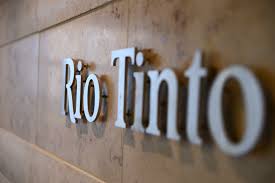
Rio Tinto’s abandoned Panguna copper mine still a threat, report says www.bloomberg.com
Rio Tinto Group contributed to widespread damage due to waste left at an abandoned copper mine in Bougainville, Papua New Guinea, and risks to local communities are ongoing, a report has found.
Panguna, which was operated by Rio subsidiary Bougainville Copper, was once one of the world’s largest copper mines. It was shut in 1989 after local protests over the disbursement of revenue from the mine degenerated into a civil war that killed as many as 20,000 people. The project has remained abandoned and Rio has struggled to obtain access to the site for remedial purposes.
In 2021, Rio agreed to fund an independent study, undertaken by environmental firm Tetra Tech Coffey. The report released Friday found serious contamination to the Jaba-Kawerong river and its tributaries, while the tailings dam — where waste from the mine is stored — is unstable and at risk of collapse. There is a risk of landslides, and parts of the mine are so unstable that there’s a threat to human life in nearby communities, it said.
“While we continue to review the report, we recognize the gravity of the impacts identified and accept the findings,” Rio’s Australia chief, Kellie Parker, said in a statement.
The Human Rights Law Centre, which lodged a complaint to the Australian government that prompted the report, welcomed the findings and called on Rio to commit to addressing its recommendations. It said the miner should contribute to a “substantial, independently managed fund to help address the harms caused by the mine and assist long-term rehabilitation efforts.”
“This is a defining moment for Rio Tinto’s social license to operate,” the centre’s legal director, Keren Adams, said in a separate statement. “Rio Tinto now has a critical opportunity to demonstrate that it is serious about meeting its human rights and environmental obligations by committing to remediation.”
(By Paul-Alain Hunt)
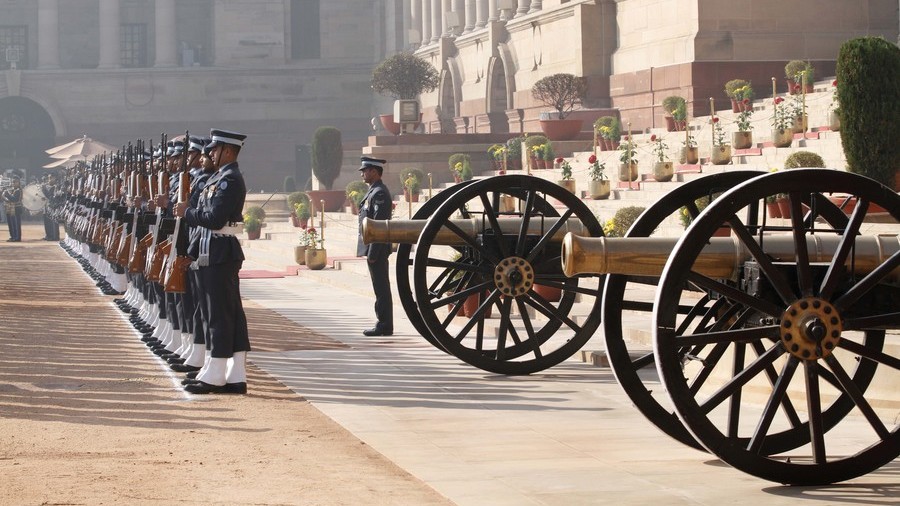
Mongolia Eyes India as Third Destination for Coal Exports www.thediplomat.com
Mongolia and India are taking major steps to boost economic activities between Ulaanbaatar and New Delhi. Amid disruptions in Australian coal supplies to India, in tandem with Mongolia’s drive to diversify its export destinations, the two countries are embarking on a new deal that may create a new supply line from Mongolia to India.
In late November, the Mongolian and the Indian governments discussed what could be a major deal for both Ulaanbaatar and New Delhi: exports of coking coal, which is a critical raw material for India’s steel industry. The deal concerns two specific companies, JSW Steel and Steel Authority of India (SAIL), but if it succeeds it will pave the way for more companies to follow.
Currently in progress, the India-Mongolia preliminary pact would involve exporting “coal, copper, and transit of these minerals.” Given Mongolia’s landlocked position, the country’s economy requires strategic connectivity with its neighbors for the use of their trade ports. Mongolia’s exports to third destinations will need to transit through either Russia or China, and those logistics will be reflected in India’s cost-benefit analysis.
In recent years, the changes in Australian coal supply to India and the intermittent tensions between India and China have pushed India’s Modi government to seek alternative sources of coal. Any India-Mongolia coal trade thus would be likely to transit through Russia. For Mongolia, these geopolitical tensions and economic rivalries only offers a window of opportunity for meeting it own economic goals.
According to the International Energy Agency (IEA), between 2000 and 2022, India’s coal consumption rose 219 percent. India’s continued growth and economic goals require a major uptake in coal consumption. Following Australia-India supply chain issues, in 2021, India’s JSW Steel imported 8,000 tons of high-quality coal from Mongolia as a test drive, the Mongolian Mining Journal reported. In that case, the coal transited through China. To Mongolia’s landlocked economy, having India, a major coal consumer, as a customer can make a big difference in revenue and development, while signaling other global partners to consider Mongolia as a coal exporter.
Today, around 90 percent of Mongolia’s coal production is exported to China. The construction of railways and improving connectivity supports Mongolia’s export to its neighbors but also to third countries. As I wrote previously for Foreign Policy, new railroads are expected to increase “exports to between $14 billion and $17 billion in 2025-2028 and $20 billion by 2029.”
Considering the distance, pricing, taxation, and China-Mongolia railway connectivity, there is no better export destination than China. At the same time, Beijing’s extensive financial and technological shift to renewable energy will have a direct impact on Mongolia’s coal exports, forcing Ulaanbaatar to seek additional buyers. Although this by no means will replace China as a major buyer, in the long run, it does behoove Ulaanbaatar to secure alternative destinations for its exports.
In the last decade, Mongolia and India have successfully leveraged their strategic partnership in starting multiple economic ventures. India’s investment in Mongolia’s first oil refinery is one notable example. According to Mongolia’s Mineral Resources and Petroleum Authority, “The oil refinery is expected to reduce dependence on fuel imports and [reduce] foreign exchange outflows by 20 percent and increase Mongolia’s budget revenues by $150 million.” The refinery, with an output of 1.5 million tons, is supposed to be operational in 2026.
As Mongolia continue to seek avenues to diversify its energy sector, India’s participation will be crucial. In 2009, India and Mongolia signed a Memorandum of Understanding (MOU) on cooperation in radioactive minerals, nuclear energy, and uranium development in Mongolia. Similar to France’s interest in Mongolia’s uranium deposits, India is also looking to activate previous agreements into working mechanisms.
In 2019, during Mongolian President Battulga Khaltmaa’s state visit to India, the two countries signed multiple agreements that boosted their ties in diverse sectors including exploration and uses of outer space, cultural exchanges, animal husbandry, and enhancing disaster response.
In line with Ulaanbaatar’s third neighbor policy and its economic goals, Mongolia is constantly searching for diverse avenues to increase exports, attract investment, and remain globally relevant with its abundance of natural resources. Mongolia’s government, headed by Prime Minister Oyun-Erdene Luvsannamsrai, is pushing the diversification agenda while also strengthening its comprehensive strategic partnership with Russia and China.
These efforts supplement geopolitical shifts and emerging trade routes, which Mongolia has no control over nor direct access to. In this context, Mongolian coal exports to India have the potential to reduce Ulaanbaatar’s landlocked conundrum.
As Mongolia and India will celebrate the 70th anniversary of thee establishment of diplomatic relations in 2025, Ulaanbaatar and New Delhi’s cooperation will continue to expand on economic, trade, scientific, technical, and humanitarian issues. The two countries’ economic partnership, specifically exports of Mongolian coal to India, has the potential to create a new trade route Ulaanbaatar can utilize more broadly.
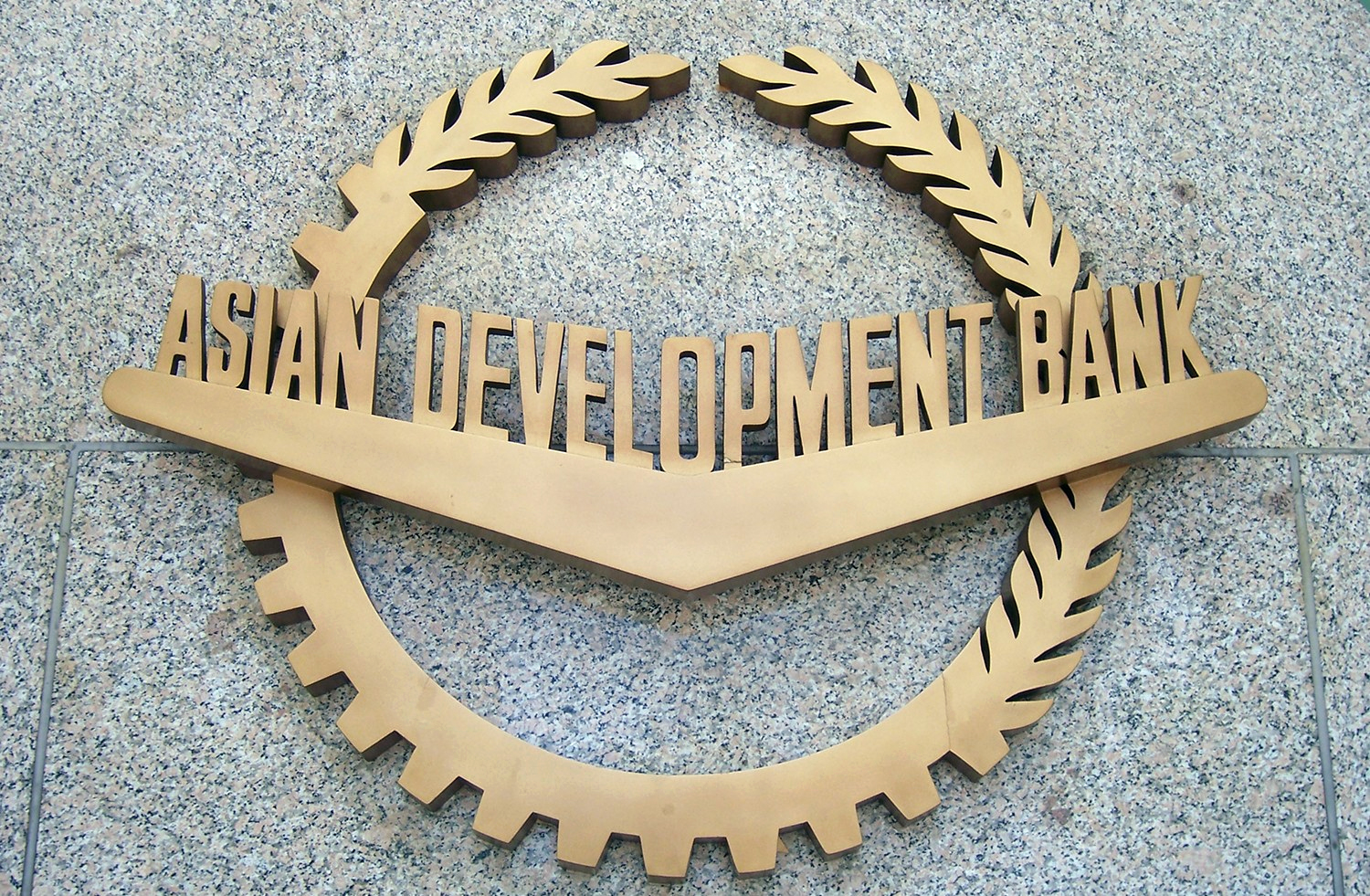
ADB, Orchlon School Sign $13.5 Million Loan for Mongolia’s First Internationally Certified Green Campus www.adb.org
The Asian Development Bank (ADB) signed a senior secured 45.7 billion Mongolian togrog (equivalent to $13.5 million) loan with Orchlon School and Kindergarten Complex LLC to support Mongolia’s first internationally certified green campus.
The financing will support the construction of a new 4-floor new school annex that incorporates climate mitigation and adaptation features, and includes modern facilities such as laboratories for science, arts, and engineering courses, as well as indoor multipurpose halls for sports. The campus aims to be certified under the internationally recognized Excellence in Design for Greater Efficiencies (EDGE) program, targeting at least 20% savings in energy, water, and embodied energy in materials.
“This project marks ADB's first private sector intervention in Mongolia's education sector and underscores ADB's commitment to fostering inclusive and sustainable development in the country,” said ADB Director General for Private Sector Operations Suzanne Gaboury. "By supporting the country’s first green campus, we are enhancing educational infrastructure while promoting environmental sustainability and resilience."
Mongolia is among the countries most impacted by climate change. The natural hazards caused by climate trends have increased the risk of absenteeism and dropouts, which could lead to reduced access to education, lower attendance rates, and potentially poorer learning outcomes. Green buildings are still relatively new in Mongolia.
"We are thrilled to partner with ADB on this groundbreaking project," said Orchlon School Principal and Founder Batmunkh Dashdeleg. "This expansion will allow us to provide more students with high-quality, bilingual education that preserves and promotes Mongolian culture, while also setting a benchmark for green building practices in Mongolia."
Established in 2001, Orchlon is the largest private K-12 institution in Mongolia. It is the only Mongolian school that provides a dual curriculum from preschool to grade 12, comprising the Mongolian National Secondary Education curriculum and the Cambridge International curriculum. With nearly 2,000 students and a strong focus on academic excellence and holistic development, Orchlon has received numerous accolades and continues to lead in educational innovation.
ADB is committed to achieving a prosperous, inclusive, resilient, and sustainable Asia and the Pacific, while sustaining its efforts to eradicate extreme poverty. Established in 1966, it is owned by 69 members—49 from the region.
- «
- 1
- 2
- 3
- 4
- 5
- 6
- 7
- 8
- 9
- 10
- 11
- 12
- 13
- 14
- 15
- 16
- 17
- 18
- 19
- 20
- 21
- 22
- 23
- 24
- 25
- 26
- 27
- 28
- 29
- 30
- 31
- 32
- 33
- 34
- 35
- 36
- 37
- 38
- 39
- 40
- 41
- 42
- 43
- 44
- 45
- 46
- 47
- 48
- 49
- 50
- 51
- 52
- 53
- 54
- 55
- 56
- 57
- 58
- 59
- 60
- 61
- 62
- 63
- 64
- 65
- 66
- 67
- 68
- 69
- 70
- 71
- 72
- 73
- 74
- 75
- 76
- 77
- 78
- 79
- 80
- 81
- 82
- 83
- 84
- 85
- 86
- 87
- 88
- 89
- 90
- 91
- 92
- 93
- 94
- 95
- 96
- 97
- 98
- 99
- 100
- 101
- 102
- 103
- 104
- 105
- 106
- 107
- 108
- 109
- 110
- 111
- 112
- 113
- 114
- 115
- 116
- 117
- 118
- 119
- 120
- 121
- 122
- 123
- 124
- 125
- 126
- 127
- 128
- 129
- 130
- 131
- 132
- 133
- 134
- 135
- 136
- 137
- 138
- 139
- 140
- 141
- 142
- 143
- 144
- 145
- 146
- 147
- 148
- 149
- 150
- 151
- 152
- 153
- 154
- 155
- 156
- 157
- 158
- 159
- 160
- 161
- 162
- 163
- 164
- 165
- 166
- 167
- 168
- 169
- 170
- 171
- 172
- 173
- 174
- 175
- 176
- 177
- 178
- 179
- 180
- 181
- 182
- 183
- 184
- 185
- 186
- 187
- 188
- 189
- 190
- 191
- 192
- 193
- 194
- 195
- 196
- 197
- 198
- 199
- 200
- 201
- 202
- 203
- 204
- 205
- 206
- 207
- 208
- 209
- 210
- 211
- 212
- 213
- 214
- 215
- 216
- 217
- 218
- 219
- 220
- 221
- 222
- 223
- 224
- 225
- 226
- 227
- 228
- 229
- 230
- 231
- 232
- 233
- 234
- 235
- 236
- 237
- 238
- 239
- 240
- 241
- 242
- 243
- 244
- 245
- 246
- 247
- 248
- 249
- 250
- 251
- 252
- 253
- 254
- 255
- 256
- 257
- 258
- 259
- 260
- 261
- 262
- 263
- 264
- 265
- 266
- 267
- 268
- 269
- 270
- 271
- 272
- 273
- 274
- 275
- 276
- 277
- 278
- 279
- 280
- 281
- 282
- 283
- 284
- 285
- 286
- 287
- 288
- 289
- 290
- 291
- 292
- 293
- 294
- 295
- 296
- 297
- 298
- 299
- 300
- 301
- 302
- 303
- 304
- 305
- 306
- 307
- 308
- 309
- 310
- 311
- 312
- 313
- 314
- 315
- 316
- 317
- 318
- 319
- 320
- 321
- 322
- 323
- 324
- 325
- 326
- 327
- 328
- 329
- 330
- 331
- 332
- 333
- 334
- 335
- 336
- 337
- 338
- 339
- 340
- 341
- 342
- 343
- 344
- 345
- 346
- 347
- 348
- 349
- 350
- 351
- 352
- 353
- 354
- 355
- 356
- 357
- 358
- 359
- 360
- 361
- 362
- 363
- 364
- 365
- 366
- 367
- 368
- 369
- 370
- 371
- 372
- 373
- 374
- 375
- 376
- 377
- 378
- 379
- 380
- 381
- 382
- 383
- 384
- 385
- 386
- 387
- 388
- 389
- 390
- 391
- 392
- 393
- 394
- 395
- 396
- 397
- 398
- 399
- 400
- 401
- 402
- 403
- 404
- 405
- 406
- 407
- 408
- 409
- 410
- 411
- 412
- 413
- 414
- 415
- 416
- 417
- 418
- 419
- 420
- 421
- 422
- 423
- 424
- 425
- 426
- 427
- 428
- 429
- 430
- 431
- 432
- 433
- 434
- 435
- 436
- 437
- 438
- 439
- 440
- 441
- 442
- 443
- 444
- 445
- 446
- 447
- 448
- 449
- 450
- 451
- 452
- 453
- 454
- 455
- 456
- 457
- 458
- 459
- 460
- 461
- 462
- 463
- 464
- 465
- 466
- 467
- 468
- 469
- 470
- 471
- 472
- 473
- 474
- 475
- 476
- 477
- 478
- 479
- 480
- 481
- 482
- 483
- 484
- 485
- 486
- 487
- 488
- 489
- 490
- 491
- 492
- 493
- 494
- 495
- 496
- 497
- 498
- 499
- 500
- 501
- 502
- 503
- 504
- 505
- 506
- 507
- 508
- 509
- 510
- 511
- 512
- 513
- 514
- 515
- 516
- 517
- 518
- 519
- 520
- 521
- 522
- 523
- 524
- 525
- 526
- 527
- 528
- 529
- 530
- 531
- 532
- 533
- 534
- 535
- 536
- 537
- 538
- 539
- 540
- 541
- 542
- 543
- 544
- 545
- 546
- 547
- 548
- 549
- 550
- 551
- 552
- 553
- 554
- 555
- 556
- 557
- 558
- 559
- 560
- 561
- 562
- 563
- 564
- 565
- 566
- 567
- 568
- 569
- 570
- 571
- 572
- 573
- 574
- 575
- 576
- 577
- 578
- 579
- 580
- 581
- 582
- 583
- 584
- 585
- 586
- 587
- 588
- 589
- 590
- 591
- 592
- 593
- 594
- 595
- 596
- 597
- 598
- 599
- 600
- 601
- 602
- 603
- 604
- 605
- 606
- 607
- 608
- 609
- 610
- 611
- 612
- 613
- 614
- 615
- 616
- 617
- 618
- 619
- 620
- 621
- 622
- 623
- 624
- 625
- 626
- 627
- 628
- 629
- 630
- 631
- 632
- 633
- 634
- 635
- 636
- 637
- 638
- 639
- 640
- 641
- 642
- 643
- 644
- 645
- 646
- 647
- 648
- 649
- 650
- 651
- 652
- 653
- 654
- 655
- 656
- 657
- 658
- 659
- 660
- 661
- 662
- 663
- 664
- 665
- 666
- 667
- 668
- 669
- 670
- 671
- 672
- 673
- 674
- 675
- 676
- 677
- 678
- 679
- 680
- 681
- 682
- 683
- 684
- 685
- 686
- 687
- 688
- 689
- 690
- 691
- 692
- 693
- 694
- 695
- 696
- 697
- 698
- 699
- 700
- 701
- 702
- 703
- 704
- 705
- 706
- 707
- 708
- 709
- 710
- 711
- 712
- 713
- 714
- 715
- 716
- 717
- 718
- 719
- 720
- 721
- 722
- 723
- 724
- 725
- 726
- 727
- 728
- 729
- 730
- 731
- 732
- 733
- 734
- 735
- 736
- 737
- 738
- 739
- 740
- 741
- 742
- 743
- 744
- 745
- 746
- 747
- 748
- 749
- 750
- 751
- 752
- 753
- 754
- 755
- 756
- 757
- 758
- 759
- 760
- 761
- 762
- 763
- 764
- 765
- 766
- 767
- 768
- 769
- 770
- 771
- 772
- 773
- 774
- 775
- 776
- 777
- 778
- 779
- 780
- 781
- 782
- 783
- 784
- 785
- 786
- 787
- 788
- 789
- 790
- 791
- 792
- 793
- 794
- 795
- 796
- 797
- 798
- 799
- 800
- 801
- 802
- 803
- 804
- 805
- 806
- 807
- 808
- 809
- 810
- 811
- 812
- 813
- 814
- 815
- 816
- 817
- 818
- 819
- 820
- 821
- 822
- 823
- 824
- 825
- 826
- 827
- 828
- 829
- 830
- 831
- 832
- 833
- 834
- 835
- 836
- 837
- 838
- 839
- 840
- 841
- 842
- 843
- 844
- 845
- 846
- 847
- 848
- 849
- 850
- 851
- 852
- 853
- 854
- 855
- 856
- 857
- 858
- 859
- 860
- 861
- 862
- 863
- 864
- 865
- 866
- 867
- 868
- 869
- 870
- 871
- 872
- 873
- 874
- 875
- 876
- 877
- 878
- 879
- 880
- 881
- 882
- 883
- 884
- 885
- 886
- 887
- 888
- 889
- 890
- 891
- 892
- 893
- 894
- 895
- 896
- 897
- 898
- 899
- 900
- 901
- 902
- 903
- 904
- 905
- 906
- 907
- 908
- 909
- 910
- 911
- 912
- 913
- 914
- 915
- 916
- 917
- 918
- 919
- 920
- 921
- 922
- 923
- 924
- 925
- 926
- 927
- 928
- 929
- 930
- 931
- 932
- 933
- 934
- 935
- 936
- 937
- 938
- 939
- 940
- 941
- 942
- 943
- 944
- 945
- 946
- 947
- 948
- 949
- 950
- 951
- 952
- 953
- 954
- 955
- 956
- 957
- 958
- 959
- 960
- 961
- 962
- 963
- 964
- 965
- 966
- 967
- 968
- 969
- 970
- 971
- 972
- 973
- 974
- 975
- 976
- 977
- 978
- 979
- 980
- 981
- 982
- 983
- 984
- 985
- 986
- 987
- 988
- 989
- 990
- 991
- 992
- 993
- 994
- 995
- 996
- 997
- 998
- 999
- 1000
- 1001
- 1002
- 1003
- 1004
- 1005
- 1006
- 1007
- 1008
- 1009
- 1010
- 1011
- 1012
- 1013
- 1014
- 1015
- 1016
- 1017
- 1018
- 1019
- 1020
- 1021
- 1022
- 1023
- 1024
- 1025
- 1026
- 1027
- 1028
- 1029
- 1030
- 1031
- 1032
- 1033
- 1034
- 1035
- 1036
- 1037
- 1038
- 1039
- 1040
- 1041
- 1042
- 1043
- 1044
- 1045
- 1046
- 1047
- 1048
- 1049
- 1050
- 1051
- 1052
- 1053
- 1054
- 1055
- 1056
- 1057
- 1058
- 1059
- 1060
- 1061
- 1062
- 1063
- 1064
- 1065
- 1066
- 1067
- 1068
- 1069
- 1070
- 1071
- 1072
- 1073
- 1074
- 1075
- 1076
- 1077
- 1078
- 1079
- 1080
- 1081
- 1082
- 1083
- 1084
- 1085
- 1086
- 1087
- 1088
- 1089
- 1090
- 1091
- 1092
- 1093
- 1094
- 1095
- 1096
- 1097
- 1098
- 1099
- 1100
- 1101
- 1102
- 1103
- 1104
- 1105
- 1106
- 1107
- 1108
- 1109
- 1110
- 1111
- 1112
- 1113
- 1114
- 1115
- 1116
- 1117
- 1118
- 1119
- 1120
- 1121
- 1122
- 1123
- 1124
- 1125
- 1126
- 1127
- 1128
- 1129
- 1130
- 1131
- 1132
- 1133
- 1134
- 1135
- 1136
- 1137
- 1138
- 1139
- 1140
- 1141
- 1142
- 1143
- 1144
- 1145
- 1146
- 1147
- 1148
- 1149
- 1150
- 1151
- 1152
- 1153
- 1154
- 1155
- 1156
- 1157
- 1158
- 1159
- 1160
- 1161
- 1162
- 1163
- 1164
- 1165
- 1166
- 1167
- 1168
- 1169
- 1170
- 1171
- 1172
- 1173
- 1174
- 1175
- 1176
- 1177
- 1178
- 1179
- 1180
- 1181
- 1182
- 1183
- 1184
- 1185
- 1186
- 1187
- 1188
- 1189
- 1190
- 1191
- 1192
- 1193
- 1194
- 1195
- 1196
- 1197
- 1198
- 1199
- 1200
- 1201
- 1202
- 1203
- 1204
- 1205
- 1206
- 1207
- 1208
- 1209
- 1210
- 1211
- 1212
- 1213
- 1214
- 1215
- 1216
- 1217
- 1218
- 1219
- 1220
- 1221
- 1222
- 1223
- 1224
- 1225
- 1226
- 1227
- 1228
- 1229
- 1230
- 1231
- 1232
- 1233
- 1234
- 1235
- 1236
- 1237
- 1238
- 1239
- 1240
- 1241
- 1242
- 1243
- 1244
- 1245
- 1246
- 1247
- 1248
- 1249
- 1250
- 1251
- 1252
- 1253
- 1254
- 1255
- 1256
- 1257
- 1258
- 1259
- 1260
- 1261
- 1262
- 1263
- 1264
- 1265
- 1266
- 1267
- 1268
- 1269
- 1270
- 1271
- 1272
- 1273
- 1274
- 1275
- 1276
- 1277
- 1278
- 1279
- 1280
- 1281
- 1282
- 1283
- 1284
- 1285
- 1286
- 1287
- 1288
- 1289
- 1290
- 1291
- 1292
- 1293
- 1294
- 1295
- 1296
- 1297
- 1298
- 1299
- 1300
- 1301
- 1302
- 1303
- 1304
- 1305
- 1306
- 1307
- 1308
- 1309
- 1310
- 1311
- 1312
- 1313
- 1314
- 1315
- 1316
- 1317
- 1318
- 1319
- 1320
- 1321
- 1322
- 1323
- 1324
- 1325
- 1326
- 1327
- 1328
- 1329
- 1330
- 1331
- 1332
- 1333
- 1334
- 1335
- 1336
- 1337
- 1338
- 1339
- 1340
- 1341
- 1342
- 1343
- 1344
- 1345
- 1346
- 1347
- 1348
- 1349
- 1350
- 1351
- 1352
- 1353
- 1354
- 1355
- 1356
- 1357
- 1358
- 1359
- 1360
- 1361
- 1362
- 1363
- 1364
- 1365
- 1366
- 1367
- 1368
- 1369
- 1370
- 1371
- 1372
- 1373
- 1374
- 1375
- 1376
- 1377
- 1378
- 1379
- 1380
- 1381
- 1382
- 1383
- 1384
- 1385
- 1386
- 1387
- 1388
- 1389
- 1390
- 1391
- 1392
- 1393
- 1394
- 1395
- 1396
- 1397
- 1398
- 1399
- 1400
- 1401
- 1402
- 1403
- 1404
- 1405
- 1406
- 1407
- 1408
- 1409
- 1410
- 1411
- 1412
- 1413
- 1414
- 1415
- 1416
- 1417
- 1418
- 1419
- 1420
- 1421
- 1422
- 1423
- 1424
- 1425
- 1426
- 1427
- 1428
- 1429
- 1430
- 1431
- 1432
- 1433
- 1434
- 1435
- 1436
- 1437
- 1438
- 1439
- 1440
- 1441
- 1442
- 1443
- 1444
- 1445
- 1446
- 1447
- 1448
- 1449
- 1450
- 1451
- 1452
- 1453
- 1454
- 1455
- 1456
- 1457
- 1458
- 1459
- 1460
- 1461
- 1462
- 1463
- 1464
- 1465
- 1466
- 1467
- 1468
- 1469
- 1470
- 1471
- 1472
- 1473
- 1474
- 1475
- 1476
- 1477
- 1478
- 1479
- 1480
- 1481
- 1482
- 1483
- 1484
- 1485
- 1486
- 1487
- 1488
- 1489
- 1490
- 1491
- 1492
- 1493
- 1494
- 1495
- 1496
- 1497
- 1498
- 1499
- 1500
- 1501
- 1502
- 1503
- 1504
- 1505
- 1506
- 1507
- 1508
- 1509
- 1510
- 1511
- 1512
- 1513
- 1514
- 1515
- 1516
- 1517
- 1518
- 1519
- 1520
- 1521
- 1522
- 1523
- 1524
- 1525
- 1526
- 1527
- 1528
- 1529
- 1530
- 1531
- 1532
- 1533
- 1534
- 1535
- 1536
- 1537
- 1538
- 1539
- 1540
- 1541
- 1542
- 1543
- 1544
- 1545
- 1546
- 1547
- 1548
- 1549
- 1550
- 1551
- 1552
- 1553
- 1554
- 1555
- 1556
- 1557
- 1558
- 1559
- 1560
- 1561
- 1562
- 1563
- 1564
- 1565
- 1566
- 1567
- 1568
- 1569
- 1570
- 1571
- 1572
- 1573
- 1574
- 1575
- 1576
- 1577
- 1578
- 1579
- 1580
- 1581
- 1582
- 1583
- 1584
- 1585
- 1586
- 1587
- 1588
- 1589
- 1590
- 1591
- 1592
- 1593
- 1594
- 1595
- 1596
- 1597
- 1598
- 1599
- 1600
- 1601
- 1602
- 1603
- 1604
- 1605
- 1606
- 1607
- 1608
- 1609
- 1610
- 1611
- 1612
- 1613
- 1614
- 1615
- 1616
- 1617
- 1618
- 1619
- 1620
- 1621
- 1622
- 1623
- 1624
- 1625
- 1626
- 1627
- 1628
- 1629
- 1630
- 1631
- 1632
- 1633
- 1634
- 1635
- 1636
- 1637
- 1638
- 1639
- 1640
- 1641
- 1642
- 1643
- 1644
- 1645
- 1646
- 1647
- 1648
- 1649
- 1650
- 1651
- 1652
- 1653
- 1654
- 1655
- 1656
- 1657
- 1658
- 1659
- 1660
- 1661
- 1662
- 1663
- 1664
- 1665
- 1666
- 1667
- 1668
- 1669
- 1670
- 1671
- 1672
- 1673
- 1674
- 1675
- 1676
- 1677
- 1678
- 1679
- 1680
- 1681
- 1682
- 1683
- 1684
- 1685
- 1686
- 1687
- »

